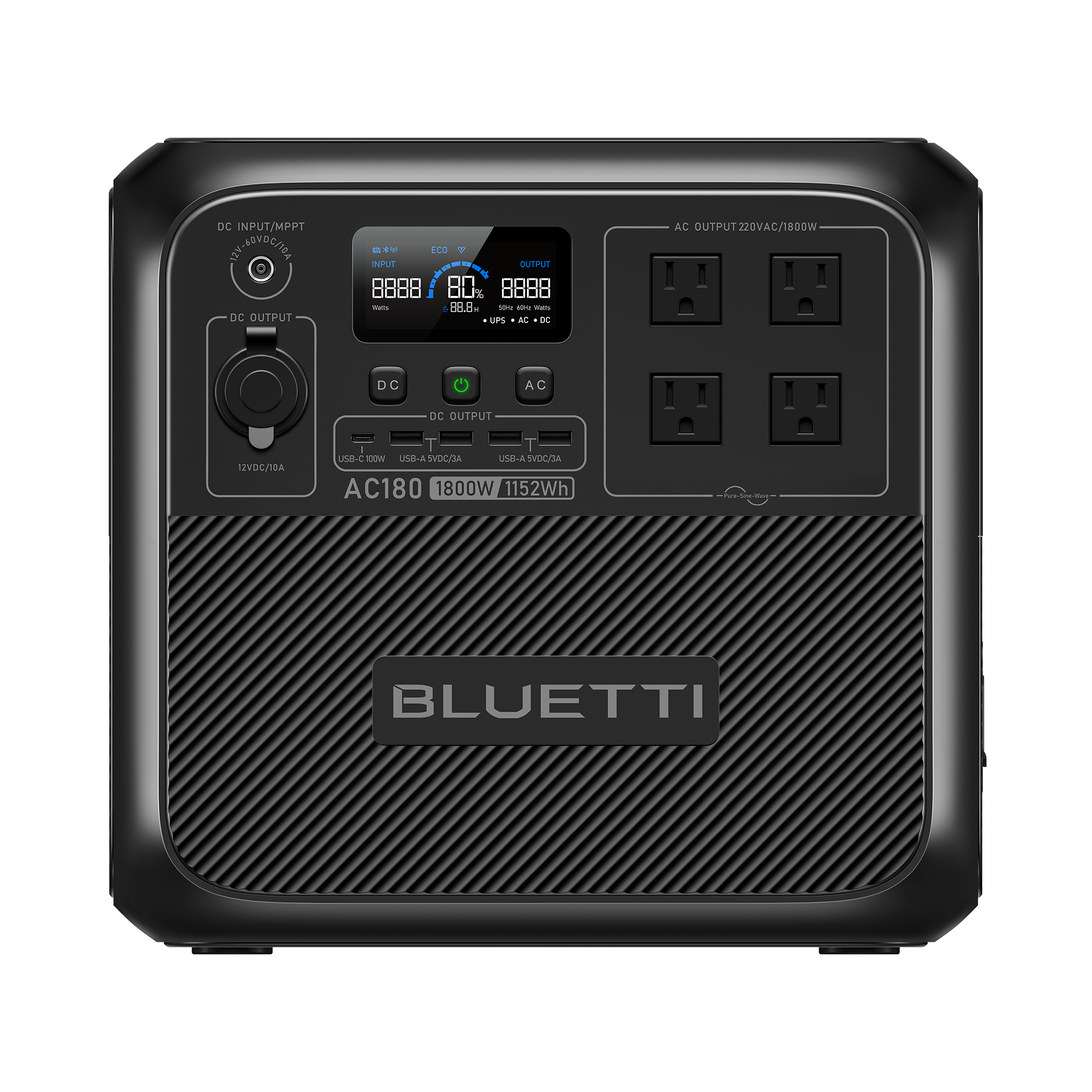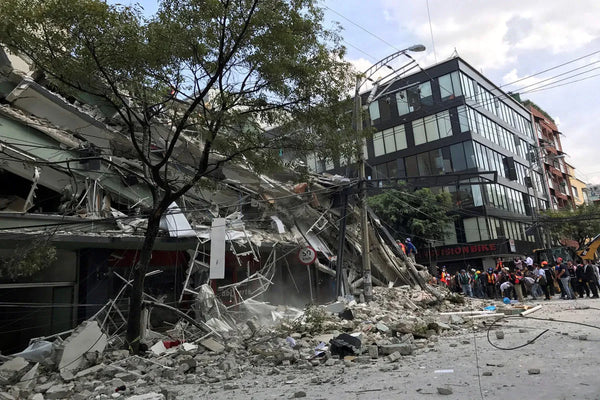
In our modern world, power disruptions in the form of blackouts and brownouts are inevitable challenges. Understanding the differences between these two phenomena and knowing how to effectively respond to them is crucial for individuals and communities alike. In this comprehensive guide, we have explored the definitions of brownout vs blackout, their causes, and the measures to take during these power interruptions. Additionally, we have delved into the significance of the BLUETTI Portable Power Station, a reliable backup power source that can provide essential electricity during critical moments. By implementing the insights and strategies presented here, we can navigate through power outages with resilience, safety, and preparedness, ensuring a smooth experience even during times of electricity shortage.
What is Brownout?
A brownout is a temporary and intentional drop in voltage on an electrical power grid. During a brownout, the voltage supplied to homes and businesses decreases, leading to dimming lights, slower electrical appliance performance, and potential disruptions in electronic devices. The aim of a brownout is to reduce the strain on the power grid when electricity demand surpasses its capacity, often during peak usage periods or in emergency situations.
Unlike blackouts, where power is entirely cut off, brownouts result in reduced power levels. They can be implemented as a preventive measure to prevent an overload on the grid or to manage the power supply during severe weather conditions. While brownouts help prevent blackouts and more severe electrical problems, they can still impact electronic devices and sensitive equipment, making it essential for individuals and businesses to take precautions during such occurrences.
What is Blackout?
A blackout is a complete loss of electrical power in a specific area or region. During a blackout, all electricity supply is interrupted, resulting in a total absence of lighting and the shutdown of all electronic devices and appliances. Blackouts can occur due to various reasons, such as severe weather conditions, equipment failure, power grid issues, or other emergencies. Unlike brownouts, which involve a reduction in voltage, blackouts are more severe and can last for varying durations, depending on the cause and the time needed to restore power. Blackouts can have significant impacts on daily life, disrupting businesses, transportation, and communication systems until electricity is restored.
Difference Between Blackout and Brownout
As mentioned above, blackout and brownout are distinct in their impact on the electricity supply. While brownouts deliver electricity at low voltage levels, blackouts result in a complete loss of power in a specific area. In this section, we will explore the major differences between these two phenomena, considering factors such as their causes, duration, impact on appliances, and potential risks. Understanding these disparities will help us effectively address and prepare for both brownouts and blackouts as part of our power management strategies.
Severity:
Blackout: More severe, as it involves a complete loss of power.
Brownout: Less severe, as power is only reduced, not entirely cut off.
Duration:
Blackout: This can vary in duration, depending on the cause and time needed to restore power.
Brownout: Typically lasts for a short duration, as it is a preventive measure to manage power supply during peak usage or emergency situations.
Cause:
Blackout: Caused by various factors such as severe weather conditions, equipment failure, power grid issues, or emergencies.
Brownout: Usually implemented intentionally to prevent an overload on the power grid during peak demand or emergency situations.
Impact on Electronics:
Blackout: More detrimental, as the sudden loss of power can lead to potential damage or data loss in electronic devices.
Brownout: This may cause disruptions in electronic devices but is generally less harmful than blackouts.
Preparedness:
Blackout: Requires more extensive preparedness measures, such as having backup power sources or emergency plans in place.
Brownout: This still necessitates some preparedness, such as unplugging sensitive electronics, but generally not as critical as blackouts.
By analyzing these aspects, one can better understand the differences between blackouts and brownouts, their potential impacts, and how to respond appropriately during such power-related occurrences.
What Caused Blackout or Brownout?

Causes of Brownout:
Brownouts are often the result of increased electricity demand, especially during peak usage periods. When the power grid experiences a surge in demand, it may become overloaded, leading to voltage reductions. Utility companies may intentionally implement brownouts as a preventive measure to balance the power supply and prevent more severe power disruptions. Additionally, technical issues or equipment failures in the power distribution system can also contribute to unintentional brownouts.
Causes of Blackout:
Blackouts are typically caused by external factors, such as severe weather events like storms, hurricanes, or heavy snowfall, which can damage power lines, transformers, and other critical infrastructure. Other causes of blackouts include equipment failures, accidents, or emergencies that lead to a sudden and complete loss of power in a specific area. Unlike brownouts, blackouts are often unexpected and can result in longer-lasting power outages until the necessary repairs and restoration efforts are completed.
Understanding the causes of brownouts and blackouts is crucial for implementing appropriate strategies to mitigate their impacts. Proactive measures, such as energy conservation during peak hours and investing in robust power infrastructure, can help reduce the frequency and severity of both brownouts and blackouts, ensuring a more reliable and stable power supply for communities and industries.
What to Do When There Is Brownout?
During a brownout, safeguarding your electrical gadgets, such as computers, televisions, and refrigerators, is paramount to prevent potential damage. Implementing proper measures, such as unplugging sensitive devices and using surge protectors, can help mitigate the risks associated with voltage fluctuations. This section will provide valuable insights on what to do during a brownout, ensuring your safety and the protection of your electronic devices. By following these guidelines, you can navigate through a brownout with confidence and minimize the impact on your valuable electronics.
1. Stay Calm and Safe:
During a brownout, remain calm and ensure the safety of yourself and others. Keep emergency lights or flashlights handy to navigate safely in dim lighting.
2. Unplug Sensitive Electronics:
To protect sensitive electronic devices from potential voltage fluctuations, unplug them during the brownout. This helps prevent damage or data loss.
3. Use Surge Protectors:
For essential electronics that need to remain connected, use surge protectors. These devices can absorb voltage spikes and safeguard your devices during power fluctuations.
4. Limit Power Usage:
Conserve energy during a brownout by limiting non-essential power usage. Avoid running high-energy appliances and turn off lights and devices not in use.
5. Stay Informed:
Stay informed about the brownout's duration and updates from utility companies or local authorities. This information can help you plan accordingly.
6. Check for Restoration Updates:
Regularly check for updates on power restoration progress. Knowing when power is expected to return can help you prepare for its restoration.
7. Have a Backup Power Source:

Consider investing in a reliable backup power source like the BLUETTI Portable Power Station. These devices can provide emergency power during brownouts, keeping essential devices and appliances running.
8. Emergency Preparedness Kit:
Prepare an emergency kit with essentials like water, non-perishable food, first-aid supplies, and extra batteries for flashlights and radios.
9. Report Outages:
If you experience a brownout or blackout, report the outage to your local utility company. This helps them identify the extent of the problem and expedite restoration efforts.
By following these guidelines, you can stay safe and prepared during brownouts, ensuring minimal disruption to your daily activities and safeguarding your electronic devices.
How to Prepare for the Next Blackout?
As unpredictable as blackouts may be, proactive preparation can significantly reduce their impact and ensure safety and comfort during these unplanned power outages. In this section, we will explore essential steps and strategies to effectively prepare for the next blackout. By taking these measures, you can be better equipped to handle blackouts and navigate through these challenging situations with ease.
Strategies for Blackout Preparedness:
Create an Emergency Plan:
Develop a comprehensive emergency plan for your household, including evacuation procedures and designated meeting points. Ensure all family members are familiar with the plan to act swiftly during blackouts.
Build a Blackout Kit:
Assemble a blackout kit containing essential items like flashlights, batteries, candles, matches, portable chargers, and a battery-powered radio. Keep the kit in an easily accessible location.
Invest in a Generator or Power Station:
Consider investing in a backup generator or a reliable power station like the BLUETTI Solar Generator to provide emergency electricity during blackouts. BLUETTI Philippines website already has, you can check them for more information.
Test Smoke Detectors and Carbon Monoxide Alarms:
Regularly test smoke detectors and carbon monoxide alarms to ensure they are in working condition, providing crucial safety measures during blackouts.
Stock Up on Non-Perishable Supplies:
Maintain a supply of non-perishable food, bottled water, and essential medication to sustain your household during prolonged blackouts.
Secure Your Home:
Reinforce doors and windows, and secure loose objects outside to prevent damage during severe weather-related blackouts.
Stay Informed:
Stay updated with weather forecasts and local news for any potential blackouts. Sign up for alerts from your utility company to receive timely information.
Practice Energy Conservation:
Prioritize energy conservation habits, such as turning off lights and appliances when not in use, to reduce electricity consumption during normal operations.
By following these blackout preparedness strategies, you can enhance your household's resilience and readiness for the next unexpected power outage. Being well-prepared allows you to respond calmly and effectively, ensuring the safety and well-being of your loved ones during these challenging situations.
Final Thoughts
Anyway, being well-informed and prepared for power disruptions is key to effectively managing blackouts and brownouts. Brownouts, characterized by reduced voltage, require measures to protect sensitive electronics and minimize potential damage. On the other hand, blackouts, and complete power losses, demand proactive planning to ensure safety and comfort during extended periods without electricity. By following the recommended guidelines, such as having emergency kits, using surge protectors, and investing in backup power sources like the BLUETTI Portable Power Station, individuals, and communities can enhance their resilience and minimize the impact of power interruptions. With a comprehensive understanding of these power-related challenges and the necessary preparedness, we can confidently navigate through the uncertainties of power outages and continue to thrive in our modern, electricity-dependent world.
FAQ:
1. Are brownouts worse than blackouts?
Ans: Brownouts are generally considered less severe than blackouts. During a brownout, the voltage is reduced, causing dimming lights and slower device performance, but power remains partially available. In contrast, blackouts entail a complete loss of electricity, resulting in total darkness and a shutdown of all electronic devices and appliances.
2. How long do blackouts last?
Ans: The duration of blackouts can vary significantly based on the cause and the time needed for restoration. Some blackouts may last for a few hours, while others can extend to days, particularly if severe weather damage or extensive power infrastructure repairs are required.
3. What are the 2 types of blackouts?
Ans: The two main types of blackouts are natural blackouts and artificial or intentional blackouts. Natural blackouts occur due to external factors like severe weather events damaging power infrastructure. Artificial blackouts are intentional power cuts by utility companies during emergencies or peak demand periods to prevent grid overloading.
4. What are the dangers of blackouts?
Ans: Blackouts pose various dangers, including potential risks to personal safety, property damage, and disruptions to essential services. Sudden loss of power can lead to accidents, especially in poorly lit areas. Electronics and appliances may be vulnerable to damage from power surges when electricity is restored. Moreover, prolonged blackouts can impact public services, communication systems, and medical facilities.
5. What is the most common cause of blackouts?
Ans: The most common cause of blackouts is severe weather events, such as storms, hurricanes, or heavy snowfall. These weather-related incidents can damage power lines, transformers, and other critical power infrastructure, leading to widespread power outages. Other causes include equipment failures, accidents, and emergencies that result in a sudden loss of electricity in specific areas.







